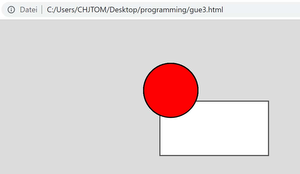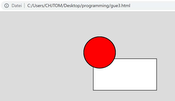Information
- Publication Type: Master Thesis
- Workgroup(s)/Project(s):
- Date: January 2020
- Date (Start): October 2018
- Date (End): March 2020
- TU Wien Library:
- Diploma Examination: 2. March 2020
- Open Access: yes
- First Supervisor: Michael Wimmer
- Pages: 112
- Keywords: Lernmethode, Lerneffizienz, Programmieren, textuell, visuell
Abstract
Learning programming is a challenging task as several skills, have to be learned. Some of those are mathematical knowledge, logical knowledge and knowledge about handling the computer. By having these skills, someone could start learning programming in a more or less effective way. However, the skill „programming“ describes the way of thinking some-one should achieve, not only writing correct code with the help of a programming language.But learning to think like a programmer needs time, as described above. Many different skills for solving software problems are needed. Therefore the way of learning is essential. Many books teaching how to program only show the right way of using a programming language and do not focus on the essential part: the way of thinking. Another problem shown in past researches is based on the way of teaching. Motivated by the right factors, student could achieve better results when learning new content. Using the method of active learning with combined audio and video sources for teaching caused much more effective learning results as humans are trained to remember faster and longer what they have seen or heard.
In Austria, students are forced to learn a variety of clearly separated topics within three years to gain knowledge about informatics before leaving high school. Breaking it down, the time for learning programming basics within a year are about 8 weeks, having 2 units à 50 minutes. So time is short and the teacher is forced to use an effective way to teach programming and show students how to think like a programmer.
Having all these facts in mind, a method shown in this document is developed that is effective enough to achieve the goal of an effective learning curve. As personally experienced, learning programming is much easier having the right way of representing what is going on. The „classic“ way of showing what is going on is by having textual output, while the method developed here uses graphical output to represent what has been programmed. The aim of this research is to analyse the effectiveness of graphical output over textual out-put. The structure of the document is as follows: analysis of actual research, basics used in the learning method developed and comparison between programming with textual output and programming with graphical output. In the end, the results are shown and a perspec-tive is shown.
Additional Files and Images
Weblinks
BibTeX
@mastersthesis{TOMASCHITZ-2020-EP,
title = "Erlernen von Programmieren an Oberstufen der Gymnasien
\"{O}sterreichs durch Computergrafik-unterst\"{u}tzte
Ausgabe",
author = "Christian Johannes Tomaschitz",
year = "2020",
abstract = "Learning programming is a challenging task as several
skills, have to be learned. Some of those are mathematical
knowledge, logical knowledge and knowledge about handling
the computer. By having these skills, someone could start
learning programming in a more or less effective way.
However, the skill „programming“ describes the way of
thinking some-one should achieve, not only writing correct
code with the help of a programming language. But learning
to think like a programmer needs time, as described above.
Many different skills for solving software problems are
needed. Therefore the way of learning is essential. Many
books teaching how to program only show the right way of
using a programming language and do not focus on the
essential part: the way of thinking. Another problem shown
in past researches is based on the way of teaching.
Motivated by the right factors, student could achieve better
results when learning new content. Using the method of
active learning with combined audio and video sources for
teaching caused much more effective learning results as
humans are trained to remember faster and longer what they
have seen or heard. In Austria, students are forced to
learn a variety of clearly separated topics within three
years to gain knowledge about informatics before leaving
high school. Breaking it down, the time for learning
programming basics within a year are about 8 weeks, having 2
units \`{a} 50 minutes. So time is short and the teacher is
forced to use an effective way to teach programming and show
students how to think like a programmer. Having all these
facts in mind, a method shown in this document is developed
that is effective enough to achieve the goal of an effective
learning curve. As personally experienced, learning
programming is much easier having the right way of
representing what is going on. The „classic“ way of
showing what is going on is by having textual output, while
the method developed here uses graphical output to represent
what has been programmed. The aim of this research is to
analyse the effectiveness of graphical output over textual
out-put. The structure of the document is as follows:
analysis of actual research, basics used in the learning
method developed and comparison between programming with
textual output and programming with graphical output. In the
end, the results are shown and a perspec-tive is shown.",
month = jan,
pages = "112",
address = "Favoritenstrasse 9-11/E193-02, A-1040 Vienna, Austria",
school = "Research Unit of Computer Graphics, Institute of Visual
Computing and Human-Centered Technology, Faculty of
Informatics, TU Wien",
keywords = "Lernmethode, Lerneffizienz, Programmieren, textuell, visuell",
URL = "https://www.cg.tuwien.ac.at/research/publications/2020/TOMASCHITZ-2020-EP/",
}

 poster
poster thesis
thesis


